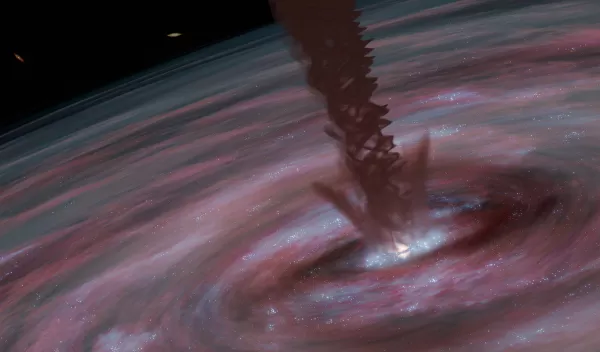
Astronomers uncover new phenomenon in growth dynamics of supermassive black hole
Scientists at the U.S. National Science Foundation National Radio Astronomy Observatory (NSF NRAO), along with an international team of astronomers, have uncovered a new cosmic mechanism in the complex dynamics of supermassive black holes — one that may explain the long-standing mystery of how they grow and address fundamental questions about galaxy formation.
Using the Atacama Large Millimeter/submillimeter Array (ALMA), astronomers uncovered novel movement patterns of gas that revealed a spiraling, magnetic wind flowing from the supermassive black hole at the center of a highly active neighboring galaxy. Like the magnetic winds that assist baby star growth, this wind may help increase the mass of the black hole. The findings were published in the journal Astronomy & Astrophysics.
"Supermassive black holes play an integral, but yet to be fully understood, role in their host galaxy's formation and evolution," says Joe Pesce, NSF program officer for NRAO. "Results such as these are helping astrophysicists understand better that connection and the black holes themselves."
ALMA's high-resolution imaging allowed researchers to track the wavelengths of light from hydrogen cyanide molecules back to their origin at the center of galaxy ESO320-G030. This revealed the outflow pattern of magnetic winds believed to slow the black hole's rate of spin and, therefore, allow a steadier inflow of matter towards the center.
"It is well-established that stars, in the first stages of their evolution, grow with the help of rotating winds accelerated by magnetic fields, just like the wind in this galaxy. Our observations show that supermassive black holes and tiny stars can grow by similar processes but on very different scales," says astronomer Mark Gorski, the lead author of this research finding.
Researchers plan to investigate if this is an isolated pattern or a standard growth stage, which may explain how some supermassive black holes grow to weigh as much as billions of stars. Understanding these life cycles would provide key insight into the nature of the cosmos and the supermassive black holes at the center of most galaxies, including the Milky Way.
